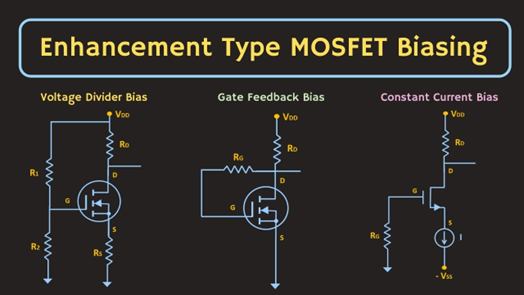Introduction
The metal-oxide-semiconductor field-effect transistor (MOSFET) is a crucial component in modern electronic circuits. It serves as a key building block in various applications, including amplification, switching, and digital logic. This article provides an overview of the working principles of a MOSFET, explaining its structure, operation, and applications.

MOSFET Structure
The MOSFET consists of three main regions: the source, the drain, and the gate. These regions are created on a semiconductor substrate, commonly made of silicon. The gate region is insulated from the semiconductor substrate by a thin layer of oxide (usually silicon dioxide), hence the name metal-oxide-semiconductor.
Working Principles
The operation of a MOSFET is based on the principle of controlling the flow of current through a semiconductor channel using an electric field. This field is generated by applying a voltage to the gate terminal. There are two types of MOSFETs: enhancement mode and depletion mode.
Enhancement Mode MOSFET
In an enhancement mode MOSFET, the transistor is normally off when no voltage is applied to the gate. To turn it on, a positive voltage is applied to the gate terminal. This creates an electric field that attracts free electrons in the semiconductor channel, forming a conductive path between the source and the drain. As a result, current can flow from the source to the drain, and the transistor is in the "on" state.
Depletion Mode MOSFET
A depletion mode MOSFET, on the other hand, is normally on without any voltage applied to the gate. Applying a negative voltage to the gate terminal creates an electric field that depletes the majority charge carriers in the semiconductor channel, reducing the conductivity and effectively turning off the transistor. To turn it on, a positive voltage is applied to the gate, allowing current to flow between the source and the drain.
MOSFET Applications
MOSFETs are widely used in electronic circuits for various purposes. Some common applications include:
- Amplification: MOSFETs can be used as voltage amplifiers in audio and radio frequency applications.
- Switching: MOSFETs can control the flow of current in electronic switches, enabling efficient power control.
- Digital Logic: MOSFETs serve as building blocks for digital circuits, allowing the creation of complex logic gates and memory elements.
Conclusion
The MOSFET is a vital component in modern electronics, enabling efficient amplification, switching, and digital logic operations. Its ability to control current flow through an electric field makes it an essential tool in a wide range of applications. By understanding the working principles of MOSFETs, engineers and electronics enthusiasts can effectively utilize these devices and unlock their potential in various electronic circuits.
Related Articles:
 Sam
Sam
Discussions
Become a Hackaday.io Member
Create an account to leave a comment. Already have an account? Log In.